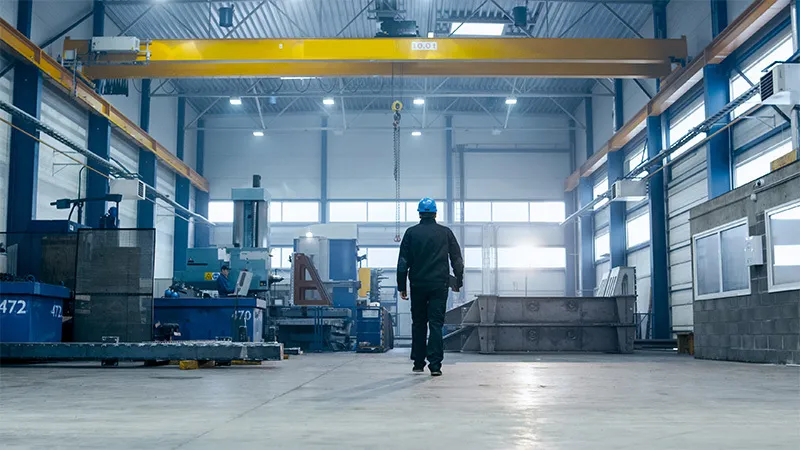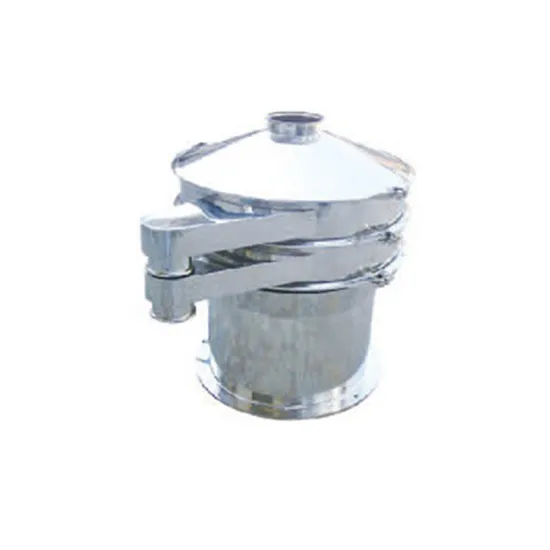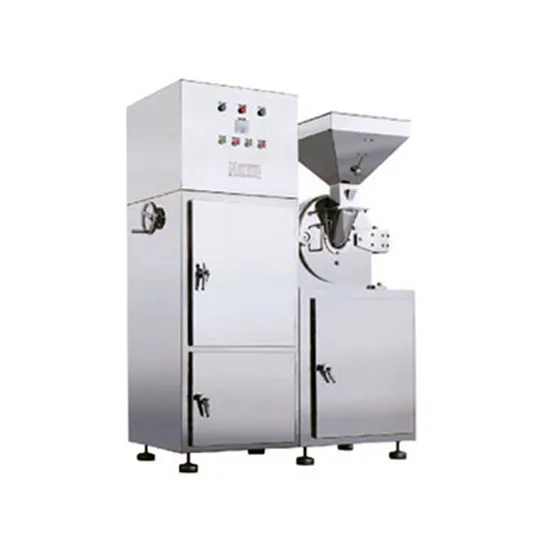NEWS
Efficiently Sort and Separate Soil with a Dirt Sifting Machine
Oct 19,2023
Table of Contents:
1. Introduction: The Importance of Efficiently Sorting and Separating Soil
2. How Does a Dirt Sifting Machine Work?
3. Key Features and Types of Dirt Sifting Machines
4. Advantages of Using a Dirt Sifting Machine
5. Applications and Benefits of Using a Dirt Sifting Machine
6. Factors to Consider When Choosing a Dirt Sifting Machine
7. How to Use a Dirt Sifting Machine Effectively
8. Frequently Asked Questions (FAQs)
9. Conclusion
Sorting and separating soil is a crucial task in various projects, such as gardening, landscaping, construction, and agriculture. It allows you to remove debris, rocks, roots, and other unwanted materials, ensuring that the soil is clean, fertile, and suitable for your specific needs. To achieve this efficiently, many professionals and DIY enthusiasts rely on dirt sifting machines. In this article, we will explore the benefits and functionalities of these machines, helping you understand why they are a valuable tool for soil management.
A dirt sifting machine, also known as a soil screener or soil sifter, is a mechanical device designed to sort and separate soil particles of different sizes. It typically consists of a vibrating screen or mesh and a conveyor belt or drum that moves the soil through the machine. As the soil passes through the vibrating screen, smaller particles fall through the mesh, while larger particles are retained.
Dirt sifting machines come in various types, each offering unique features to meet specific requirements. Some common types include:
- Trommel Screens: These machines use a rotating cylindrical screen to sort and separate soil. They are highly versatile and can handle large volumes of soil efficiently.
- Vibrating Screens: Vibrating screens utilize vibration to separate soil particles. They are suitable for smaller-scale projects and offer precise control over the size of the separated soil.
- Grizzly Screens: Grizzly screens consist of parallel bars or rails spaced apart to allow smaller soil particles to fall through. They are excellent for removing larger debris and rocks from the soil.
- Shaker Screens: Shaker screens use a shaking motion to separate soil particles. They are commonly used in construction and landscaping projects.
Using a dirt sifting machine provides several advantages, including:
- Time Efficiency: Manual sorting and separation of soil can be labor-intensive and time-consuming. A dirt sifting machine significantly speeds up the process, allowing you to complete projects more efficiently.
- Improved Soil Quality: By removing unwanted materials from the soil, a dirt sifting machine helps improve soil quality. This ensures that plants receive the necessary nutrients and grow healthily.
- Cost Savings: Investing in a dirt sifting machine eliminates the need for outsourcing soil separation services, saving you money in the long run. It also reduces the amount of waste generated on-site, minimizing disposal costs.
Dirt sifting machines find applications in various industries and projects, including:
- Gardening and Landscaping: Whether you're preparing a flower bed or creating a new landscape design, a dirt sifting machine helps you remove stones, roots, and other debris, creating a clean and fertile soil bed.
- Construction: Construction sites often require soil separation to ensure the soil used for backfilling or foundations is free from contaminants. A dirt sifting machine efficiently removes rocks, gravel, and debris, ensuring the integrity of the construction project.
- Agriculture: In the agricultural sector, a dirt sifting machine helps farmers and gardeners separate soil for seedbed preparation, plant propagation, and potting soil production. It ensures the optimal growing conditions for plants, leading to higher yields.
When selecting a dirt sifting machine, consider the following factors:
- Project Scale: Determine the size and volume of soil you need to sort and separate. This will help you choose the appropriate machine size and capacity.
- Mobility: If you frequently move between job sites or have limited space, opt for a portable or compact dirt sifting machine that is easy to transport and maneuver.
- Durability: Look for a machine made from high-quality materials that can withstand heavy use and harsh environments. This ensures a longer lifespan and minimal maintenance requirements.
- Versatility: Consider the range of applications the machine can handle. Some machines come with interchangeable screens or adjustable settings to accommodate different soil types and particle sizes.
To use a dirt sifting machine effectively, follow these steps:
1. Set up the machine on a level surface and ensure it is securely anchored.
2. Load the soil onto the machine's input platform or hopper.
3. Turn on the machine and adjust the settings according to your desired soil separation criteria.
4. Allow the machine to run, ensuring that the separated soil is collected in a container or designated area.
5. Periodically clean the machine's screens to prevent clogging and maintain optimal performance.
A1: Yes, some dirt sifting machines are designed to handle wet soil. However, it is essential to choose a machine specifically built for wet soil applications to ensure optimal performance.
A2: Yes, a dirt sifting machine effectively removes small rocks, debris, roots, and other unwanted materials from the soil, leaving behind clean and well-sorted soil.
A3: The frequency of screen cleaning depends on the soil composition and the amount of debris present. It is recommended to clean the screens regularly to prevent clogging and maintain the machine's efficiency.
A4: Yes, many equipment rental companies offer dirt sifting machines for short-term use. Renting can be a cost-effective option for smaller projects or if you only require the machine occasionally.
A5: Yes, a dirt sifting machine is commonly used in composting operations to separate larger organic matter from finished compost. It helps create a more refined compost product.
Efficiently sorting and separating soil is made easier with the use of a dirt sifting machine. These machines offer time and cost savings, improved soil quality, and versatile applications in various industries. By understanding their functionalities, types, and key features, as well as considering the factors when choosing one, you can make an informed decision and achieve optimal results in your soil management projects. Invest in a dirt sifting machine today and experience the benefits it brings to your soil-related tasks.
1. Introduction: The Importance of Efficiently Sorting and Separating Soil
2. How Does a Dirt Sifting Machine Work?
3. Key Features and Types of Dirt Sifting Machines
4. Advantages of Using a Dirt Sifting Machine
5. Applications and Benefits of Using a Dirt Sifting Machine
6. Factors to Consider When Choosing a Dirt Sifting Machine
7. How to Use a Dirt Sifting Machine Effectively
8. Frequently Asked Questions (FAQs)
9. Conclusion
1. Introduction: The Importance of Efficiently Sorting and Separating Soil
Sorting and separating soil is a crucial task in various projects, such as gardening, landscaping, construction, and agriculture. It allows you to remove debris, rocks, roots, and other unwanted materials, ensuring that the soil is clean, fertile, and suitable for your specific needs. To achieve this efficiently, many professionals and DIY enthusiasts rely on dirt sifting machines. In this article, we will explore the benefits and functionalities of these machines, helping you understand why they are a valuable tool for soil management.
2. How Does a Dirt Sifting Machine Work?
A dirt sifting machine, also known as a soil screener or soil sifter, is a mechanical device designed to sort and separate soil particles of different sizes. It typically consists of a vibrating screen or mesh and a conveyor belt or drum that moves the soil through the machine. As the soil passes through the vibrating screen, smaller particles fall through the mesh, while larger particles are retained.
3. Key Features and Types of Dirt Sifting Machines
Dirt sifting machines come in various types, each offering unique features to meet specific requirements. Some common types include:
- Trommel Screens: These machines use a rotating cylindrical screen to sort and separate soil. They are highly versatile and can handle large volumes of soil efficiently.
- Vibrating Screens: Vibrating screens utilize vibration to separate soil particles. They are suitable for smaller-scale projects and offer precise control over the size of the separated soil.
- Grizzly Screens: Grizzly screens consist of parallel bars or rails spaced apart to allow smaller soil particles to fall through. They are excellent for removing larger debris and rocks from the soil.
- Shaker Screens: Shaker screens use a shaking motion to separate soil particles. They are commonly used in construction and landscaping projects.
4. Advantages of Using a Dirt Sifting Machine
Using a dirt sifting machine provides several advantages, including:
- Time Efficiency: Manual sorting and separation of soil can be labor-intensive and time-consuming. A dirt sifting machine significantly speeds up the process, allowing you to complete projects more efficiently.
- Improved Soil Quality: By removing unwanted materials from the soil, a dirt sifting machine helps improve soil quality. This ensures that plants receive the necessary nutrients and grow healthily.
- Cost Savings: Investing in a dirt sifting machine eliminates the need for outsourcing soil separation services, saving you money in the long run. It also reduces the amount of waste generated on-site, minimizing disposal costs.
5. Applications and Benefits of Using a Dirt Sifting Machine
Dirt sifting machines find applications in various industries and projects, including:
- Gardening and Landscaping: Whether you're preparing a flower bed or creating a new landscape design, a dirt sifting machine helps you remove stones, roots, and other debris, creating a clean and fertile soil bed.
- Construction: Construction sites often require soil separation to ensure the soil used for backfilling or foundations is free from contaminants. A dirt sifting machine efficiently removes rocks, gravel, and debris, ensuring the integrity of the construction project.
- Agriculture: In the agricultural sector, a dirt sifting machine helps farmers and gardeners separate soil for seedbed preparation, plant propagation, and potting soil production. It ensures the optimal growing conditions for plants, leading to higher yields.
6. Factors to Consider When Choosing a Dirt Sifting Machine
When selecting a dirt sifting machine, consider the following factors:
- Project Scale: Determine the size and volume of soil you need to sort and separate. This will help you choose the appropriate machine size and capacity.
- Mobility: If you frequently move between job sites or have limited space, opt for a portable or compact dirt sifting machine that is easy to transport and maneuver.
- Durability: Look for a machine made from high-quality materials that can withstand heavy use and harsh environments. This ensures a longer lifespan and minimal maintenance requirements.
- Versatility: Consider the range of applications the machine can handle. Some machines come with interchangeable screens or adjustable settings to accommodate different soil types and particle sizes.
7. How to Use a Dirt Sifting Machine Effectively
To use a dirt sifting machine effectively, follow these steps:
1. Set up the machine on a level surface and ensure it is securely anchored.
2. Load the soil onto the machine's input platform or hopper.
3. Turn on the machine and adjust the settings according to your desired soil separation criteria.
4. Allow the machine to run, ensuring that the separated soil is collected in a container or designated area.
5. Periodically clean the machine's screens to prevent clogging and maintain optimal performance.
8. Frequently Asked Questions (FAQs)
Q1: Can a dirt sifting machine handle wet soil?
A1: Yes, some dirt sifting machines are designed to handle wet soil. However, it is essential to choose a machine specifically built for wet soil applications to ensure optimal performance.
Q2: Is a dirt sifting machine suitable for removing small rocks and debris from soil?
A2: Yes, a dirt sifting machine effectively removes small rocks, debris, roots, and other unwanted materials from the soil, leaving behind clean and well-sorted soil.
Q3: How often should I clean the screens of a dirt sifting machine?
A3: The frequency of screen cleaning depends on the soil composition and the amount of debris present. It is recommended to clean the screens regularly to prevent clogging and maintain the machine's efficiency.
Q4: Can I rent a dirt sifting machine for my project instead of buying one?
A4: Yes, many equipment rental companies offer dirt sifting machines for short-term use. Renting can be a cost-effective option for smaller projects or if you only require the machine occasionally.
Q5: Can a dirt sifting machine be used for composting?
A5: Yes, a dirt sifting machine is commonly used in composting operations to separate larger organic matter from finished compost. It helps create a more refined compost product.
9. Conclusion
Efficiently sorting and separating soil is made easier with the use of a dirt sifting machine. These machines offer time and cost savings, improved soil quality, and versatile applications in various industries. By understanding their functionalities, types, and key features, as well as considering the factors when choosing one, you can make an informed decision and achieve optimal results in your soil management projects. Invest in a dirt sifting machine today and experience the benefits it brings to your soil-related tasks.
More News









